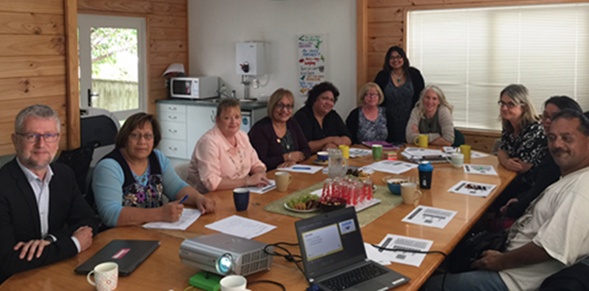Hutt Union and Community Health Service (HUCHS) currently has 570 patients with diabetes. Over half of these people have HbA1c over 64mmol/mol indicating poor glycaemic control. The Health Quality & Safety Commission’s (the Commission’s) Atlas of Healthcare Variation for diabetes management provided clear evidence of the extent of the gap between current monitoring and treatment and best practice recommendations. How could they turn this around? How could they support their patients to make positive changes?
Primary health organisation Te Awakairangi Health Network and HUCHS received support from the Commission to undertake a diabetes improvement project. It is one of the three successful initiatives supported by the Commission’s Whakakotahi programme.
“The Commission provides advisors, support, training and $6000 to offset costs,” says Dr John Wellingham, Chair of the Commission’s Primary Care Expert Advisory Group. “The project teams provide the local knowledge and expertise, community engagement and the drive to improve care.”
The HUCHS team needed to answer three vital questions; What do we want to accomplish? What changes will we make that will result in improvement? And how do we know a change is an improvement?
“The aim felt straightforward,” says Sally Nicholl, manager at HUCHS. “We wanted to reduce the average HbA1c by 10 percent in our patients with HbA1c over 64mmol/mol by 31 December 2017. What we could do to get there was a harder nut to crack.”
With support from the Commission’s quality improvement advisors, the team identified two separate pathways that they needed to map out; those with a new diagnosis of diabetes and those with established diabetes that was poorly controlled. For these two groups of patients, the process map and issues confronted were different, meaning the change ideas also needed to differ.

Hutt Union and Community Health Service diabetes improvement project team
The team decided to focus on three key areas; effective diabetes management, barriers to access, and patient empowerment.
As the team begin the project, a number of challenges became apparent.
“We need time – time that we don’t have.” says Sandy Bhawan, pharmacist and project co-lead. “Time for patient consultations, for planning, engaging with our community and consumer representatives – even time to document our PDSA cycles rather than just doing them.”
However, just the act of focusing on this vulnerable group of patients has produced changes. There has been a 5.6mmol/mol reduction in the average HbA1c and a 26 percent increase in diabetes annual reviews completed.
But the biggest challenge is how HUCHS might to help empower and engage patients to make positive lifestyle changes.
Sandy says this is a work in progress, in consultation with patients and communities.
